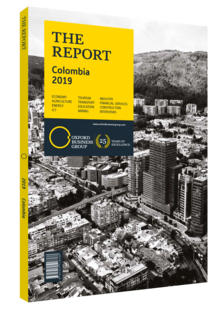Roberto Moreno, President, Amarilo: Interview

Interview: Roberto Moreno
How is Bogotá responding to the challenges of urbanisation and densification?
ROBERTO MORENO: Bogotá is one of the densest cities in the region, and indeed the world. In addition to densification, we are also experiencing a population shift, a growing middle class and new trends in family planning. As a result, we require smaller but more numerous housing options. In this context, an integrated urban planning model, which encompasses residential areas and mass transit systems, is paramount to ensure the well-organised and efficient development of cities.
Decree 621 is an urban renovation policy, targeting the city’s main axes. It provides a roadmap for the construction of high-rise buildings, ease of access to mass transit and so on. By densifying specific areas, while integrating existing communities in our plans, we will contribute to the development of economic activity across a number of sectors. While we see this decree as a support to a well-rounded urban development policy, it is crucial that it be accompanied by the development of means of transport, such as the TransMilenio bus line and the Bogotá Metro. Unfortunately, we are behind in this regard as the former should have had 400 km of lines by 2015, yet as of 2018 it has only 180 km.
What potential exists for the housing market outside of major urban centres?
MORENO: Today, Colombia has 26 cities with more than 200,000 inhabitants and over 84% of GDP is produced within them. By 2030 we will have 63 cities with over 100,000 people. While this provides us with a competitive advantage, it inevitably presents a challenge in terms of urban planning. A number of stakeholders are advocating for the concept of cities within cities, which entails the development of real estate projects that integrate all aspects of life and provide all the necessary amenities, such as health centres, schools, recreation areas and so on. We are looking at major cities and their surrounding municipalities to see how they interconnect and how regions’ territorial ordinance plans fit with each other on a national scale. This includes how cities connect with the rest of the country to ensure the development of rural areas through investment in transport infrastructure.
What are the growth prospects for the industry?
MORENO: For the first time, social housing has taken a leading role in the real estate sector. The policies put forward by the former administration and the increasing role played by family compensation funds have resulted in the proliferation of social housing projects and the narrowing of the housing deficit. In this context, the new administration has vowed to continue subsidising the social housing segment, meaning that the momentum of social housing will continue to drive the sector forward. On the medium and higher end of the spectrum, the industry’s health is more susceptible to macroeconomic cycles. After the downturn experienced in 2016 we are now progressively seeing an improvement in the country’s economic indicators. This, coupled with increased confidence and the recent election of a pro-business presidential candidate, is sure to result in a rebound in these segments.
How has the role of international investors evolved?
MORENO: Until the 1990s the real estate sector did not have funds specialised in the financing of the sector, and commercial real estate was sold on a horizontal basis with very few investors renting space to retailers. Since the opening of the economy, during the 2000s, we have seen the arrival of private equity funds, channelling money from local and international investors into existing real estate with the intention to lease. Recently a number of funds have begun to invest in development, which is extremely positive. While investors in these products search for increased returns, the progressive drop in the country’s risk will lower the yields expected by investors, making financial closes easier to achieve.
You have reached the limit of premium articles you can view for free.
Choose from the options below to purchase print or digital editions of our Reports. You can also purchase a website subscription giving you unlimited access to all of our Reports online for 12 months.
If you have already purchased this Report or have a website subscription, please login to continue.

